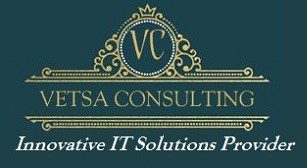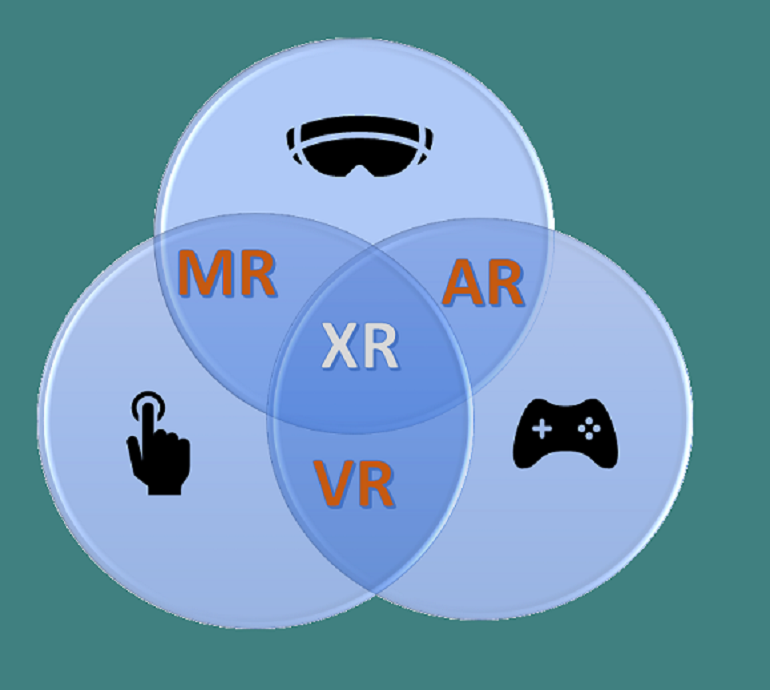The 4 Rs aka “realities” of today, tomorrow, and future.. VR, AR, MR and XR.
These realities are already changing how we work, play and everything in between. These realities will further reshape the world as we know it today. Technology is constantly evolving as we work to create and innovate, replacing old processes and obsolete technologies with new and improved ones. It is just as revolutionary as the internet or the smartphone.
Virtual Reality (VR)
VR allows total immersion in a virtual environment with a headset that completely replaces the user’s view. We See, feel and interact with the environment. VR provides a otherworldly experience with next level human interaction. A person using virtual reality equipment is able to look & move around in a artificial world, and interact with virtual features or items or people in that environment. VR essentially “transports” you into a virtual world that you can interact with. Users completely immerse themselves into the virtual world and interact with it, while the real world is hidden from view.
There are extensive variety of different applications for Virtual Reality for both Enterprise/business users (training, collaboration, visualisation etc) and Consumers (Games, entertainment, socialising, Edutainment etc).
Thousands of businesses are already experiencing the benefits of VR. Working in VR maximizes efficiency to get the job done, from remote collaboration to productivity gains and cost savings.
- Work place training – Provides a Safer, Cheaper, and immersive way to train and prepare people for expensive and/or dangerous tasks. For example, fire departments can prepare trainees better for battling actual fires, and so much more like reduce traditional training hazards, cut operating costs etc.
- Collaboration: Communication and collaboration are key in any organization whether it’s a Large multi-national enterprise or a SME. VR can help eliminate Work silos, Increase efficiency, revolutionize managing workflow processes, streamlining workflows etc. VR can assist in helped reinvent how information is shared across teams in a global organization.
- Entertainment: With VR, we can drive immersive experiences for consumers, creating meaningful and engaging fun opportunities. It can create memorable and repeatable experiences. A The shared motion platform in VR could immerse the players/ gamers while drawing in the crowd who’s cheering them on through the play.
- Visualisation: VR lets you visualise any physical environment virtually. For example, a medical school students can virtually conduct surgeries without running the risk of harming actual patients OR a construction company can digitally simulate the building or structures before erecting them with physical materials.
Augmented Reality (AR)
AR creates augmented elements to add to existing reality. Smart phones/ handhelds are the most common hardware for this medium. In AR, the user is provided with additional computer generated information that enhances their perception of reality. Virtual objects are laid “on top” of real-world objects and spaces using AR. It’s used in social media too, with social media application’s filters will let you place shapes, glasses, hats, or cat ears or make-up to their photos and videos and many more in various colours & fonts & designs.
While augmented reality users perceive virtual objects as an extension of the real world, users of virtual reality immerse themselves in a purely virtual world. We can say AR is made up of 25% virtual content and 75% real content.
The primary goal of AR technology is to improve our daily lives. There are a variety of apps that use AR, including some that allow you to translate text using your camera, identify stars in the sky, and even see how your garden would look like with different plants. Imagine your car windshield transform into a head-up display using AR technology, allowing you to observe your current location or speed without taking your eyes off the road.
Mixed Reality (MR)
MR merges real and virtual environments to create new visualizations where physical and digital objects interact with each other in real-time. A classical example of MR experience is using Microsoft’s HoloLens where you can place digital objects in your room and interact with them virtually. It transparently displays 3D objects in the user’s direct environment. Another one is the virtual shopping experiences for clothes, furniture etc.
In MR, a user interacts with the real and virtual environments simultaneously. Physical objects in the real world have an effect on digital elements. A key challenge of using MR technology is, it requires an MR headset and a lot of processing power.
Extended Reality (XR)
XR is an all-encompassing term that includes VR, AR, and MR, as they extend the limits of reality in some shape or form. It can redefine traditional shopping experiences and change eCommerce etc, letting you shop online while also being able to try on the clothes.
It’s a great way to minimize risks while training healthcare professionals, pilots, astronauts, soldiers, and scientists in their respective fields. Imagine no longer needing to fly a real plane as a pilot-in-training. Trainees are able to train their behaviour, actions in various situations within a safe environment, allowing them to prepare accordingly and learn fast. Another simple example is, viewing your potential home virtually before signing a deed of sale without any travel by buyers, sellers and estate agents.
Moreover, XR can also lower the cost of training because virtual environments are less expensive to build. XR can remove communication barriers across languages. For example, XR glasses could project captions and live-translate a foreign language, adding “real-life” subtitles to multilingual conversations between people from different countries speaking different languages. It would be fantastic for the deaf people who could easily engage in conversations using live captions.
These extended realm of realities are capable of altering the human experiences significantly, and we are seeing this happening already through the ways AR and VR are used today. However, to expand, the equipment for these needs to be more accessible to reducing the high usage costs we see at present.
XR have many positive life-changing uses, but they are used for more sinister purposes in mediums like social media. Developers need to follow data protection requirements & address data privacy issues, and governments similarly need to proactively regulate these laws, before Extended Reality becomes a mainstream.
We can see these Realities are changing how we communicate, connect, educate, and do business across the globe, for a better world with a positive future. They have the potential to improve and enrich our lives in ways we have yet to envision. It’ll be exciting to see how they’ll be applied to both business and everyday life!

